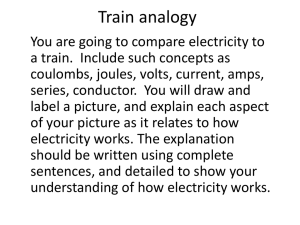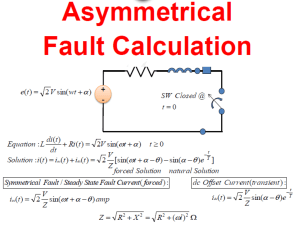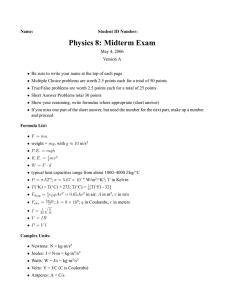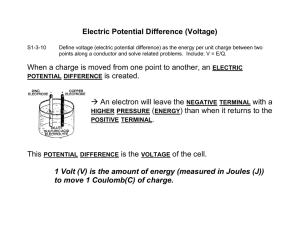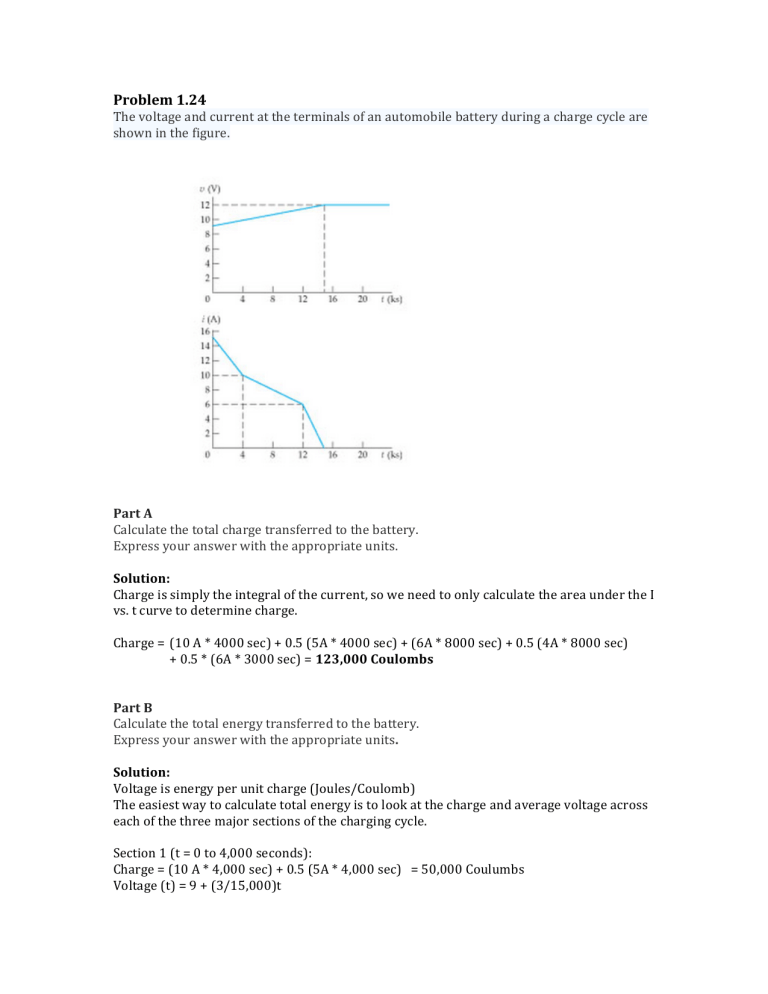
Problem 1.24 The voltage and current at the terminals of an automobile battery during a charge cycle are shown in the figure. Part A Calculate the total charge transferred to the battery. Express your answer with the appropriate units. Solution: Charge is simply the integral of the current, so we need to only calculate the area under the I vs. t curve to determine charge. Charge = (10 A * 4000 sec) + 0.5 (5A * 4000 sec) + (6A * 8000 sec) + 0.5 (4A * 8000 sec) + 0.5 * (6A * 3000 sec) = 123,000 Coulombs Part B Calculate the total energy transferred to the battery. Express your answer with the appropriate units. Solution: Voltage is energy per unit charge (Joules/Coulomb) The easiest way to calculate total energy is to look at the charge and average voltage across each of the three major sections of the charging cycle. Section 1 (t = 0 to 4,000 seconds): Charge = (10 A * 4,000 sec) + 0.5 (5A * 4,000 sec) = 50,000 Coulumbs Voltage (t) = 9 + (3/15,000)t From t = 0 to 4000 sec, the average voltage is then: 9 + (3/15,000)*2000 = 9.4V And the energy is therefore: Energy = 9.4 * 50,000 Coulombs = 470,000 Joules Section 2 (t = 4,000 to 12,000 seconds) Charge = (6A * 8000 sec) + 0.5 (4A * 8000 sec) = 64,000 Coulombs Average voltage = voltage (t = 8,000 sec) = 9 + (3/15,000)* 8,000 = 10.6V Energy = 10.6 * 64,000 Coulombs = 678,400 Joules Section 3 (t = 12,000 seconds to t = 15,000 seconds) Charge = 0.5 * (6A * 3,000 sec) = 9,000 Coulombs Average voltage = voltage (t = 13,500 seconds) = 9 + (3/15,000)*13,500 = 11.7V Energy = 11.7 * 9,000 Coulombs = 105,300 joules Summing the results gives: Energy = 470,000 + 678,400 + 105,300 Joules = 1,253,700 Joules To three significant figures, energy = 1.25 X 106 Joules
